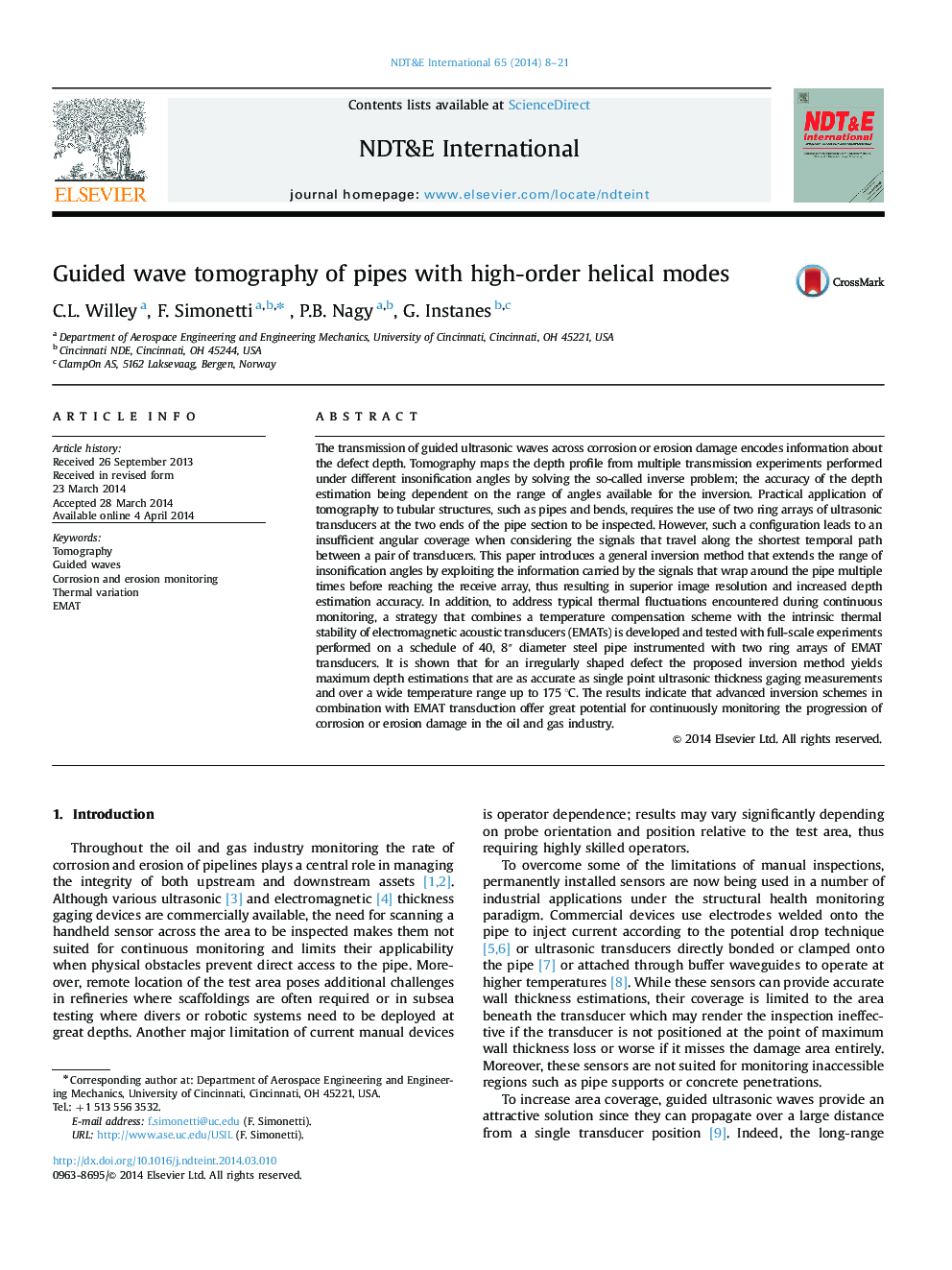| Article ID | Journal | Published Year | Pages | File Type |
|---|---|---|---|---|
| 295093 | NDT & E International | 2014 | 14 Pages |
•First system for guided wave tomography of pipes based on EMAT transduction.•High-resolution guided wave tomography of pipes based on higher-order helical modes.•High-accuracy corrosion depth estimation over a wide temperature range.
The transmission of guided ultrasonic waves across corrosion or erosion damage encodes information about the defect depth. Tomography maps the depth profile from multiple transmission experiments performed under different insonification angles by solving the so-called inverse problem; the accuracy of the depth estimation being dependent on the range of angles available for the inversion. Practical application of tomography to tubular structures, such as pipes and bends, requires the use of two ring arrays of ultrasonic transducers at the two ends of the pipe section to be inspected. However, such a configuration leads to an insufficient angular coverage when considering the signals that travel along the shortest temporal path between a pair of transducers. This paper introduces a general inversion method that extends the range of insonification angles by exploiting the information carried by the signals that wrap around the pipe multiple times before reaching the receive array, thus resulting in superior image resolution and increased depth estimation accuracy. In addition, to address typical thermal fluctuations encountered during continuous monitoring, a strategy that combines a temperature compensation scheme with the intrinsic thermal stability of electromagnetic acoustic transducers (EMATs) is developed and tested with full-scale experiments performed on a schedule of 40, 8″ diameter steel pipe instrumented with two ring arrays of EMAT transducers. It is shown that for an irregularly shaped defect the proposed inversion method yields maximum depth estimations that are as accurate as single point ultrasonic thickness gaging measurements and over a wide temperature range up to 175 °C. The results indicate that advanced inversion schemes in combination with EMAT transduction offer great potential for continuously monitoring the progression of corrosion or erosion damage in the oil and gas industry.
